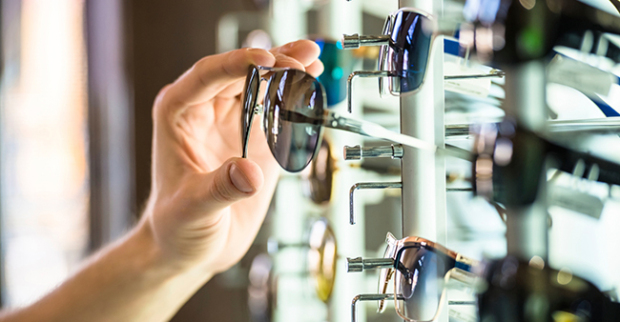
What to Look for When Buying Sunglasses
1. What are Glasses Needed for and when will They be used?
Glasses that are used for running should not be the same as those that are worn to the beach. Depending on the activity, the appropriate lens protection should be chosen. On the beach, it should be taken into account, for example, that the sand reflects around 15% UV, and that the amount of UV increases by 4% every 300 meters of altitude.
2. Protection Against Ultraviolet Rays
This aspect is fundamental, and whether the protection is more or less high will depend on the activity carried out. Ultraviolet (UV) rays are not visible by the human eye, and are divided into UVB, which can cause corneal problems, and UVA, more dangerous because they can penetrate the cornea and lens and reach the retina, where they can cause pathologies severe like cataracts and you can buy prescription sunglasses at Designer Optics.
3. The Category of Filters
The filter is numbered from 0 to 4, with 4 being the highest and indicates the amount of visible light absorption; that is, luminosity, which is not the same as protection against UV radiation. This explains why a dark lens does not necessarily protect from UV radiation, since what does or does not absorb the radiation is the material, not the color.
- Category 0: They can absorb from 0% to 19% of light, they are used mainly indoors and with covered sky.
- Category 1: They can absorb between 20% and 56% and are used especially in low luminosity.
- Category 2: They are capable of absorbing between 57% and 81% of light, they are usually used in conditions of medium sunlight, on cloudy days.
- Category 3: they are capable of absorbing between 82% and 92% of light, therefore, in fairly high light conditions.
- Category 4: They absorb up to 98% of light, and are indicated for use in high mountains, skiing or water sports, in which the incidence of sun is extreme and light reflection is also produced with aspects such as snow or water.
4. The Type of Lens
- The most suitable, for its maximum protection, is the polarized lens, whose filter eliminates all residual reflections and mirror effects.
- The degraded lens is one that gradually lightens the tone of the glass, since the upper part is darker and the lower part lighter. They are the most suitable to wear indoors and in hours of little sun. Care must be taken with light bouncing off the ground or other surfaces as the rays will more easily enter the lower degraded part.
- Photochromic lenses are the most used by athletes and people who do outdoor activities, who go from direct light to shady areas. This type of lens varies its tone according to the amount of light.
- The uniform lens is what we find in most of the sunglasses. The coloration of the lens is uniform.
5. The Color of the Glass
- Brown: it is indicated in case of myopia and among its peculiarities is its ability to filter blue radiation, increase contrast and depth of field.
- Gray: It is the most recommended for driving. It transmits light evenly and respects natural colors.
- Green: Recommended for people with hyperopia and for water sports. This color makes it possible to perceive colors with hardly any alteration, reduces visible light and does not interfere with clarity.
- Yellow: Not suitable for driving on very bright days, especially for driving. It is an important light enhancer and improves contrast on cloudy days.
6. The Mount
The most appropriate, according to the National College of Opticians-Optometrists (CNOO), are those that cover the sides of the eyes because they prevent solar radiation from entering. It is also important that they are not overweight and that the frame adapts to the shape of the face. Special care must be taken if the lenses are prescription, as not all frames are suitable. Before you have to look at the prescription, choose the lenses and then the frame.


























